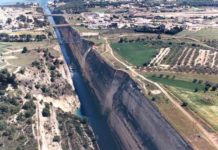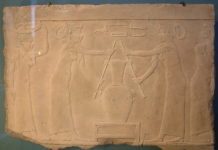It seems that every week scientists are making new and profound discoveries about the universe, but that’s really not quite the case. Despite all these mind-blowing headlines and eye-popping images of distant galaxies and quasars, our knowledge of the universe and physical laws remains remarkably poor. In just the past three decades the most important discovery has been that some 95% of the universe is comprised of dark matter and dark energy. Fritz Zwicky was the astronomer who first noted that there seemed to be missing mass in the observable universe around 1933, but it was Vera Rubin who provided the most convincing evidence in the 1970s.
The implication of this discovery is that everything we currently know about matter and energy in general is fundamentally misinformed, despite the current state-of-the-art in technology, and until we take a few steps back and reappraise universally held assumptions about the universe we simply will not move forward in our understanding. Understanding the nature of dark matter and energy may well transform civilization in a way that has not happened in 4 centuries.
Astrophysics differs from other sciences in one very important respect – the objects and events under study are remote and inaccessible. No doubt, most readers have pondered how it is possible that scientists can possibly know what occurs within the interior of stars and galaxies when the farthest any human has traveled is to the moon. Even the first satellites, Voyager 1 & 2, launched in 1977 are only now leaving the heliosphere, which is the region of space surrounding the sun far beyond the outer planets.
This brief series of essays will begin by providing a historical context to demystify the study of astrophysics. This will require first that we briefly cover the problem of motion. In the next article we will briefly cover the basics of optics and light-matter interaction. Afterwards, we can then see why the discovery of dark matter and energy will force us to completely transform and further unify four centuries of physics and nuclear chemistry.
The Problem of Motion
Gradually, over a period of slightly less than two centuries between 1514 and 1687, to be specific, everything changed about how people began thinking about the universe and our place in it. In 1514 a simple Polish Cleric, Nicholas Copernicus, anonymously published a proposal suggesting that the earth might in fact be revolving around the sun. He was actually inspired by the naturalistic observations found in the writings of Aristarchus of Samos (280 BCE).
Astrophysics is a fairly new science by historical standards. For most of world history nearly everyone had naturally believed that the heavens were utterly inaccessible and unknowable. Philosophy is centrally concerned with unifying all sciences. The study of physics had not yet been properly distinguished from philosophy, or, more accurately, the study of motion, rest and the mutual influences between physical objects and events had not yet been properly distinguished from philosophy. This fact and the influence of Copernicus permitted Galileo Galilei to easily shatter the longstanding physics of Aristotle in the beginning of the 17th century.
The First Grand Unification
Throughout all of history the simple mechanics of moving objects was never properly understood. Common sense was dispelled by the uncommon sense of a few important historical figures.
Until Galileo, even the leading scholars held that the heavens and the earth were governed by mutually exclusive sets of laws: heavenly laws and earthly laws. The heavens were perfect, unchanging and immutable while the earth was imperfect, ever-changing and mutable. This sharp division could also be found in many of the mythologies of distant cultures. The Greco-roman gods all descended from Chaos (disorder), Chronos (time), Gaea (earth) and Ouranos (sky).
But we do not see earthrises and earthsets, only sunrises and sunsets. If the earth doesn’t feel as if it is moving, why make such a strange proposal? Well, advances in geometry even as early as Aristarchus’ period permitted him to see that the Sun was very far off and therefore known to be much larger than the earth. It simply made no sense to him that something so large should revolve around something so small. This alone, however, was not a very convincing argument for many people, which is probably why you may have never heard of him.
Still, by the period of Copernicus, Ptolemy’s Almagest (150 CE) remained the leading scholarly work on the arrangements of the sun and planets. It placed the earth squarely in the center of the universe and worked reliably as a navigation reference for making maps. Over time, however, it required the introduction of more and more assumptions concerning the motions of the planets if it was to be reconciled with the volumes of observational data accumulated over the centuries. We face a similar problem with today’s astrophysics. In order to explain all of the strange new observations we make about the universe without changing the fundamentals we must introduce newer assumptions as to what else may be going on beyond our sight.
By 1543 Copernicus had published a mathematically comprehensive, highly detailed and thorough book on the sun-centered universe based entirely on the fact that it required fewer assumptions than Ptolemys model. The historical division between earthly laws and heavenly laws, not to mention the authority of Ptolemy, simply made it nearly impossible to convince anyone no matter how powerful the argument. In fact, it may well have been the mathematical detail that undermined his attempt.
The First Astrophysicists
There were of course those rare and insightful individuals who appreciated what Copernicus had accomplished. By 1601 Johannes Kepler would have the astronomical data he needed to complete the first 2 of his three laws of planetary motion. This marked the beginning of astrophysics when the highly precise volumes of data provided by Tycho Brahe were combined with the mathematical rigor of Kepler to describe for the first time in history the relative motions of celestial objects in a way that did not depend on an earthbound observer, and those laws remain in use today by astronomers seeking to detect distant planets in other solar systems.
Only a few short years later Galileo Galilei was experimenting with the motions of falling objects and along slopes forming the first mathematical laws of acceleration. He also emphasized the Copernican model by demonstrating that the motion of a ship, for example, has no affect on the motions of objects on the ship so long as the motion is constant. We all know this for a fact today as we routinely zip down the highway at 60 mph and sense no motion within the interior of the car at all until it either speeds up, slows down or turns. Our coffee cup and its contents moves with us until we make sudden changes in speed and/or direction.
Even though it was easy to demonstrate the relativity of moving and stationary objects and thereby the possibility that the earth may in fact be moving, it was still a far cry from the compelling evidence needed to overturn the enduring earth-centered paradigm. By 1687 in an event no less dramatic than Moses parting the Red Sea, Isaac Newton provided compelling evidence and opened the sky when he published his Philosophie Naturalis Principia Mathematica (Mathematical Principles of Natural Philosophy). On the shoulders of the giants mentioned above, Newton unified the laws of motion by demonstrating that the orbits of the planets could be understood in the same terms as those describing the fall of an apple.
We have now briefly covered the problem of motion in its historical context. In the next article we will briefly cover how astrophysicists came to determine the distances between remote celestial objects, their motions and physical makeup. Then, we will look more closely at the strange nature of Dark Matter and Dark Energy. Ultimately, this series of articles will draw certain conclusions and revisit assumptions about motion, rest and light-matter interaction as a preliminary attempt to reconcile why it is that 95% of the matter and energy in the universe is entirely remote to us. If that statistic is accurate in the least, then it begs the question as to why we dont experience even a small amount anywhere in our own solar system.








